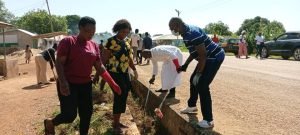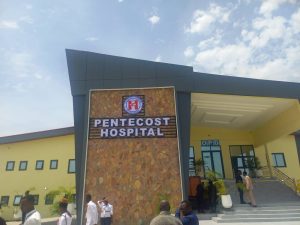World Asphyxia Awareness Month: September

In a significant statement, Mr. Richard Addah, a neonatal expert from the Upper East Regional Hospital in Bolgatanga, urged that young ladies under the age of 18 should be strongly advised against engaging in sexual activities, as this could lead to unexpected pregnancies and serious health risks for newborns. During a specialized media event focused on the pressing issue of birth asphyxia, Mr. Addah highlighted the dire consequences that can arise from premature childbirth, particularly the condition known as birth asphyxia.
Birth asphyxia, as explained at the event, occurs when a newborn is deprived of sufficient oxygen during the critical periods surrounding delivery—whether before, during, or immediately after childbirth. This deprivation can have devastating consequences, potentially resulting in irreversible damage to vital organs and, in severe cases, leading to the tragic outcome of neonatal death. The discussion aimed to raise awareness about this often-overlooked phenomenon, particularly in the context of Ghana, where infant mortality rates remain alarmingly high.
Health professionals underscored the pressing need for nationwide and regional action against birth asphyxia. Despite being largely preventable, it continues to rank as one of the predominant causes of newborn fatalities both in Ghana as a whole and specifically in the Upper East Region. Disturbingly, local hospitals report losing thousands of newborns each year due to complications arising from oxygen deprivation during the birth process.
The dialogue then moved to identifying the various causes and risk factors associated with birth asphyxia. Experts outlined that specific conditions, such as prolonged or obstructed labor, maternal infections during pregnancy, premature births, and an alarming lack of access to skilled birth attendants, play significant roles in the occurrence of asphyxia. Compounding these challenges are delays in reaching medical facilities and the inadequate resources available in some maternity wards, which enhance the risk of adverse outcomes.
Recognizing the signs of birth asphyxia in newborns is crucial. Attendees learned that a baby who exhibits a failure to cry immediately after delivery, shows weak or absent breathing, appears incredibly limp, or has a bluish tint to the skin may be suffering from asphyxia. In such critical moments, obtaining immediate medical intervention is paramount to preserving the child’s life.
The conversation also delved into the plight of those infants who survive asphyxia. These babies often emerge in need of urgent medical interventions, such as resuscitation and specialized neonatal care. Many require incubators and may face long-term health challenges that necessitate ongoing support for developmental delays or disabilities. Families caring for such children frequently find themselves in need of not only medical assistance but also emotional and financial resources to navigate their circumstances.
Preventative strategies were a focal point of the discussion. Panelists stressed the crucial role of consistent antenatal care, timely hospital deliveries, and the availability of trained birth attendants. The importance of raising community awareness regarding the dangers of unsupervised home births was also highlighted as an essential measure for prevention.
The long-term ramifications of birth asphyxia can be severe. Survivors may contend with a range of complications, including cerebral palsy, hearing impairments, learning difficulties, and, in extreme situations, permanent brain damage. These challenges not only affect the individual child’s development but also place significant emotional and financial burdens on families and the healthcare system.
Throughout the program, health workers shared their own challenges in addressing and preventing asphyxia. Key among these difficulties were inadequate neonatal resuscitation equipment, a shortage of trained personnel in rural areas, and a general lack of awareness among expectant mothers about the risks associated with childbirth. Despite these obstacles, they reaffirmed their commitment to saving lives with the limited resources at their disposal.
The event concluded with a powerful call to action for the community. Expectant mothers were strongly urged to prioritize regular antenatal visits, plan for supervised hospital deliveries, and seek immediate medical care in the event of any pregnancy-related complications. The collective message emphasized that the birth of each child is a momentous occasion, and fostering a protective environment against asphyxia requires a united effort among health workers, families, and the broader community.






https://shorturl.fm/0LNuu
https://shorturl.fm/bkFI5